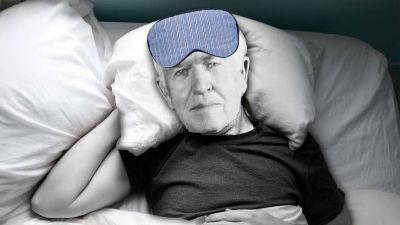Can you sleep your way to a creative breakthrough? The great inventor and modern science say yes.
Thomas Edison held more than 1,000 patents and played a role in inventing the telegraph, light bulb, phonograph, movie camera, and alkaline batteries, among other pillars of the modern world. Clearly the guy was good at generating breakthrough ideas and solving tough innovation challenges. What was his secret?
A big brain and incredible work ethic clearly played a role, but according to a fascinating new Scientific American article so did naps -- and not just your ordinary, every day afternoon snooze.
Can you nap your way to a eureka moment?
"The inventor is said to have napped while holding a ball in each hand, presuming that, as he fell asleep, the orbs would fall to the floor and wake him. This way he could remember the sorts of thoughts that come to us as we are nodding off, which we often do not recall," explained Bret Stetka on the magazine's website recently.
Using this somewhat bizarre technique Edison believed he was able to bring back useful ideas from the twilight zone between sleep and wakefulness. His long record of exceptional creativity suggests that the idea might not be as wacky as it first appears, but as Stetka explains, so does modern science.
"Published recently in Science Advances, a new study reports that we have a brief period of creativity and insight in the semilucid state that occurs just as we begin to drift into sleep," he reports. "The findings imply that if we can harness that liminal haze between sleep and wakefulness--known as a hypnagogic state--we might recall our bright ideas more easily."
The article goes into detail about the research, but basically the researchers asked 103 volunteers to solve a math puzzle after trying a version of Edison's tennis ball nap trick while hooked up to a machine that monitors sleep. The subjects who hovered just on the edge of sleep -- a stage modern sleep researchers refer to a N1 - were vastly better at cracking the tricky problem.
How to put Edison's insight to work
So should you set yourself up with a couple of tennis balls and a recliner for the next time you're flummoxed by a difficult problem or in need of a breakthrough idea? While science supports Edison's belief that the phase between sleep and wakefulness is uniquely creative (Einstein and Salvador Dali are among the other great minds rumored to have used Edison's technique), the latest research does not recommend his tennis ball trick as the best way to bring back ideas from this liminal state.
In the Science Advances study participants were given a drinking glass to hold instead of a ball, but most didn't let it go until they'd drifted into deeper, and less creatively fruitful N2 sleep. If you're looking to go hunting for solutions on the edge of consciousness, you're probably better off laying down empty handed, setting your alarm for 20 minutes in the future, and just allowing your mind to drift.
You may sometimes fall too deeply asleep to maximize creativity (in that case you probably needed the rest anyway), but many times the alarm might just catch you as you're drifting through the weird and fertile twilight zone of N1. Keep a notebook by your side to capture any ideas you retrieve.
Sure it sounds a little weird, but it worked for one of the greatest inventors ever so it just might be worth a try.
Inc
